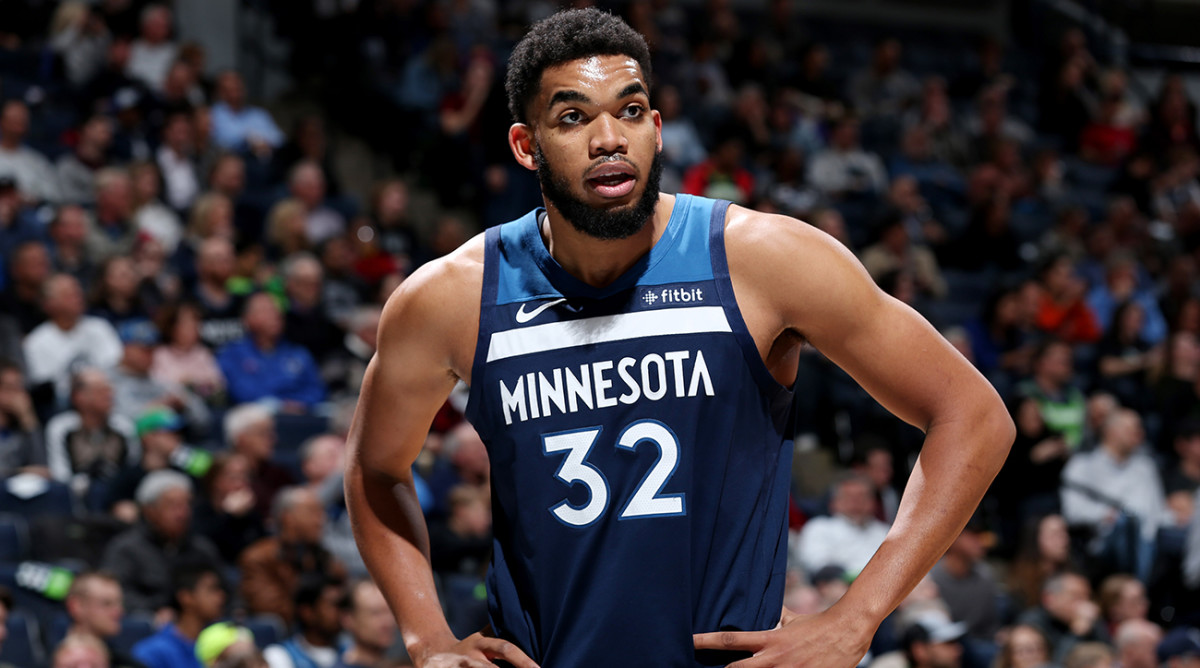Assessing Minnesota’s Future After the Jimmy Butler Trade

The Timberwolves pulled the plug on the Jimmy Butler era on Nov. 10, recommitting the organization to Minnesota’s young duo of Karl-Anthony Towns and Andrew Wiggins. Butler’s tenure originally showed promise—the Wolves reached the playoffs for the first time since 2003-04 last season—but quickly devolved into a maelstrom of expletive-laden taunts and organizational undermining. The situation became untenable.
Minnesota received a pair of proven assets in its deal with Philadelphia. Robert Covington is an effective three-and-D wing who can approximate some of Butler’s value on the defensive end, while Dario Saric is a shifty stretch four who is only 24. Thibodeau is likely fighting for his job this season. In choosing to acquire Saric and Covington instead of a haul of picks from Houston or package headlined by Josh Richardson from Miami, Thibs is attempting to have his cake and eat it, too. Minnesota recouped players that can keep it in the 2018-19 playoff hunt, while also receiving young, controllable assets. But will splitting the difference pay off?
Thibodeau’s job status won’t depend on Saric and Covington. Towns and Wiggins will determine the future of the franchise, and the decision to deal Butler was largely due to their wilting role in the offense. Towns’s tendency to stand away from the action when not being fed in the post was exacerbated by Butler’s domination of the ball. Towns jogged through screens and ceded post position far too often, and Minnesota’s five-game losing streak before dealing Butler felt like a breaking point. To recover the Towns of the past three seasons, Butler had to go.
Butler’s departure is less impactful for Wiggins. He’s inclined to continue the stream of maddening shot selection and inconsistent defensive effort regardless of teammates, pairing flashes of eye-popping athleticism with moments that are sure to raise Thibodeau’s blood pressure. Wiggins is still young and talented enough to make for a quality Robbin to Towns’s Batman. But the former No. 1 overall pick will need to curb his bad habits sooner than later to reach his potential alongside Thibodeau.
Minnesota ripped off a trio of wins after the Butler trade, headlined by a reinvigorated Towns and a torrid shooting start from Covington. The franchise center began attacking the tin with abandon, displaying a nastiness and toughness previously unseen. Towns looks empowered after claiming the upper hand in Minnesota’s power struggle, unleashing slams and screams that remind Minnesota of his mammoth potential. Yet even with a rejuvenated Towns, the Timberwolves may have dug themselves too deep of a hole early in the season. Minnesota is currently 14th in the West and 0–8 on the road while playing the 22nd-toughest schedule. Climbing six spots in the toughest conference in recent memory is doubtful barring an MVP-level campaign from Towns the rest of the way.
Missing the playoffs will likely spell the end of Thibodeau’s tenure. So what will the next coach and general manager inherit? The answer is complicated.

Both Wiggins and Towns are signed through 2022-23 (2023-24 for Towns), each signing an escalating extension that will hit over $25 million next season and over $33 million by the end of their respective deals. Locking up Towns long-term is a smart bet. Despite his inconsistencies, the Kentucky product is still a dominant offensive force, a floor-spacing big who can punish in the post. Towns became the first player in NBA history to hit 250-plus threes while tallying 2500-plus rebounds in his first three seasons, making 42.1% of triples last season. He’s an NBA unicorn in every sense of the word.
Wiggins’s contract is more questionable. We’ve outlined his strengths and flaws below, and while it’s understandable for Minnesota to double down on the former top pick—and the player they dealt Kevin Love for—it’s hard to shake the feeling that the Timberwolves will come to regret such a lucrative contract in the early 2020s. Wiggins's shot profile and lack of playmaking look to be more permanent traits than sheddable habits.
MCCANN: Fultz's Latest Shoulder Saga Could Implicate the Law
Two other non-rookies are signed in Minnesota through 2019-20. Covington’s $12 million per year will look like a relative bargain in the coming years. Gorgui Dieng’s deal, on the other hand, already looks like a cap catastrophe. Minnesota reportedly aimed to ship the $48.7 left on his contract over the next three seasons in a potential Butler deal, but such a high figure for a replacement-level big makes his deal largely untradeable. The Timberwolves will likely have to attach draft capital to unload Dieng’s outsized contract.
The final unknown on Minnesota’s cap sheet is Dario Saric. He’ll hit restricted free agency in 2020 and should see a sizable offer, potentially in the $16-20 million range. Minnesota will have a couple of years to see if he’s a quality fit alongside Towns, but if the Timberwolves match on a restricted offer, their core could consist of Towns, Wiggins and Saric for years to come. It’s a nice trio—and potentially a quartet with continued development from rookie guard Josh Okogie—but not one that can compete with the upper echelon in the West.
Trading for Butler in June 2017 was a smart bet at the time. Minnesota has never been a player on the free-agent market, and adding a proven alpha dog to the Timberwolves’ precocious young core could have raised Minnesota to heights unseen since the Kevin Garnett era. But 17 months later, the organization’s best laid plans were imploded, forced to deal Butler and hit the reset button. Thibodeau’s reign should end come April. The next regime will need to pick up the pieces, armed with Towns, Wiggins and an uncertain path back to relevance in the Western Conference.
